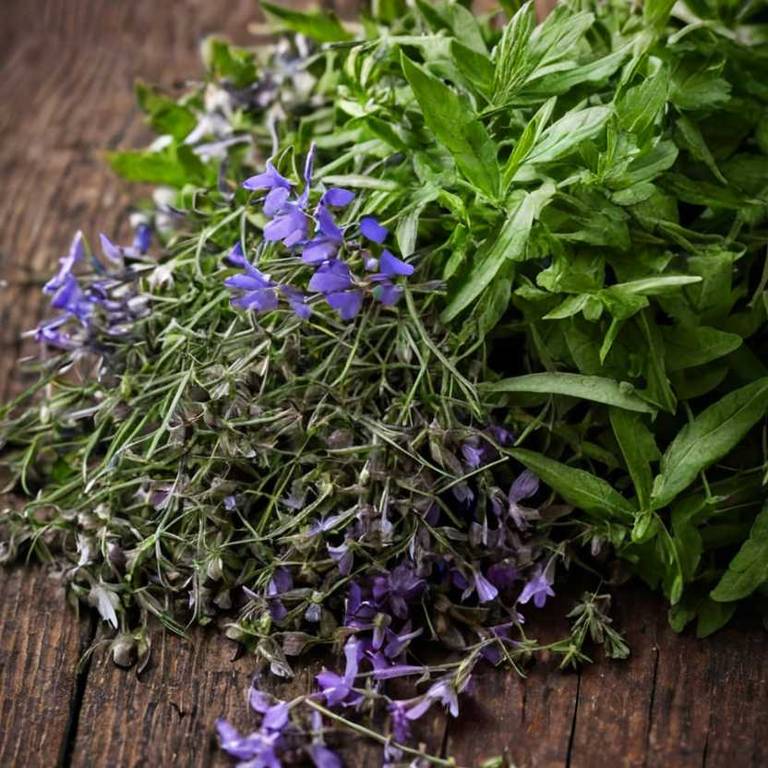By Leen Randell
Updated: Jul 11, 2024
What to know about Lobelia erinus (sweet alyssum) before using it medicinally

Lobelia erinus, commonly known as sweet alyssum, is a herb that has been utilized for its health-promoting properties, particularly in alleviating symptoms of respiratory issues such as asthma and bronchitis by acting as an expectorant and bronchodilator.
This tiny flowering plant is a popular choice among gardeners due to its low maintenance requirements, versatility in growth habits, and its ability to thrive in a variety of climates. Botanically, Lobelia erinus is classified as an annual herb of the Campanulaceae family, characterized by its delicate, white, or blue, bell-shaped flowers.
Historically, Lobelia erinus has been documented in European herbal remedies as early as the 18th century, with mentions of its use in treating various ailments in the works of renowned botanists and herbalists.
This article explains the medicinal, horticultural, botanical, and historical aspects of Lobelia erinus.
What are the medicinal properties of Lobelia erinus?
Lobelia erinus helps with anxiety, insomnia, and restlessness due to its sedative and calmative properties. The plant's medicinal uses also extend to treating skin conditions such as eczema and acne. Its antiseptic properties make it effective against bacterial and fungal infections.
The active constituents of Lobelia erinus responsible for its medicinal properties are lobeline, lobelanine, and alkaloids. These compounds have been shown to have a range of pharmacological effects, including sedative and antispasmodic activities.
The leaves and stems of Lobelia erinus are the most commonly used parts of the plant for medicinal purposes. The leaves can be used fresh or dried to make teas, infusions, and tinctures. The stems can be used to make extracts and decoctions.
When used improperly, Lobelia erinus can cause side effects such as nausea, vomiting, and diarrhea. Excessive consumption can lead to respiratory depression, tremors, and convulsions. Ingestion of large quantities can be fatal.
Precautions when using Lobelia erinus medicinally include consulting a healthcare professional before use, especially for pregnant or breastfeeding women. The plant should be avoided by people with respiratory problems and those taking certain medications, such as sedatives and anticholinergics.
What are the horticulural aspects of Lobelia erinus?
Lobelia erinus grow in well-drained soil and full sun to partial shade. They prefer a slightly acidic to neutral soil pH, between 6.0 and 7.0. They require a temperature range of 15-20°C (59-68°F) to thrive. Adequate water supply is also essential.
For optimal growth, plant Lobelia erinus 15-20 cm apart in containers or hanging baskets. Water regularly, but avoid overwatering. Fertilize with a balanced fertilizer during the growing season. Prune spent flowers to encourage new blooms. Mulch around the base to retain moisture and suppress weeds.
To harvest Lobelia erinus, cut off the stems with scissors or pinch off individual flowers. Harvest the flowers in the morning, when they are at their peak. Continue harvesting regularly to promote continuous blooming. Avoid cutting off more than one-third of the plant at a time to prevent shock.
Common pests that affect Lobelia erinus include aphids, whiteflies, and spider mites. Diseases such as powdery mildew, leaf spot, and root rot can also occur. Regularly inspect the plant for signs of pests and diseases, and treat promptly if necessary. Maintain good air circulation and water hygiene to prevent fungal diseases.
What are the botanical aspects of Lobelia erinus?
Lobelia erinus is a compact, annual or perennial herb with a sprawling habit, reaching 10-30 cm in height. Leaves are narrow, lance-shaped, and 1-3 cm long, with a glabrous upper surface and ciliate margins. Inflorescences are terminal, erect or pendulous, and composed of small, white or blue flowers.
Lobelia erinus belongs to the family Campanulaceae, order Asterales, class Magnoliopsida, and kingdom Plantae. Its taxonomic classification is as follows: kingdom Plantae, family Campanulaceae, genus Lobelia, species L. erinus. The species is also known as Lobeliopsis erinus and is sometimes confused with Lobelia persica.
There are several variants of Lobelia erinus, including 'Blue Cascade' and 'Snowtop White', which have different flower colors and growth habits. Some varieties are bred for their compact growth, while others are more sprawling. Varieties may also differ in leaf shape and size.
Lobelia erinus is native to South Africa and the Mediterranean region, but has been naturalized in many parts of the world, including Europe, North America, and Australia. It thrives in well-drained soils and full sun to partial shade.
The life cycle of Lobelia erinus begins with seed germination, followed by vegetative growth and flowering. The plant blooms continuously throughout its lifespan, producing small, white or blue flowers in clusters. The seeds are produced in small capsules, which burst open to release the seeds when mature.
What are the historical aspects of Lobelia erinus?
Lobelia erinus is a flowering plant that has been used for medicinal and ornamental purposes for centuries. Its leaves and flowers have been employed to treat a range of ailments, including skin conditions and fever.
In ancient Greek mythology, the nymph Alyssum was said to have been transformed into a flower, which was believed to possess healing properties. This mythological association may have contributed to the plant's use in traditional medicine.
Throughout history, Lobelia erinus has been imbued with symbolic meanings, representing innocence, modesty, and gentleness. It was also seen as a symbol of the soul, with its delicate white flowers believed to evoke a sense of spiritual purity.
In the 17th and 18th centuries, Lobelia erinus was featured in numerous botanical texts, including John Parkinson's "Paradisi in Sole" and Johann Bauhin's "Historia Plantarum Universalis". These texts documented the plant's morphology, habitat, and medicinal properties.
Archaeological evidence suggests that Lobelia erinus was cultivated in ancient gardens, with depictions of the plant found on artifacts from the Roman Empire. A Roman fresco from the 1st century AD, discovered in Pompeii, features a floral arrangement that includes sweet alyssum.